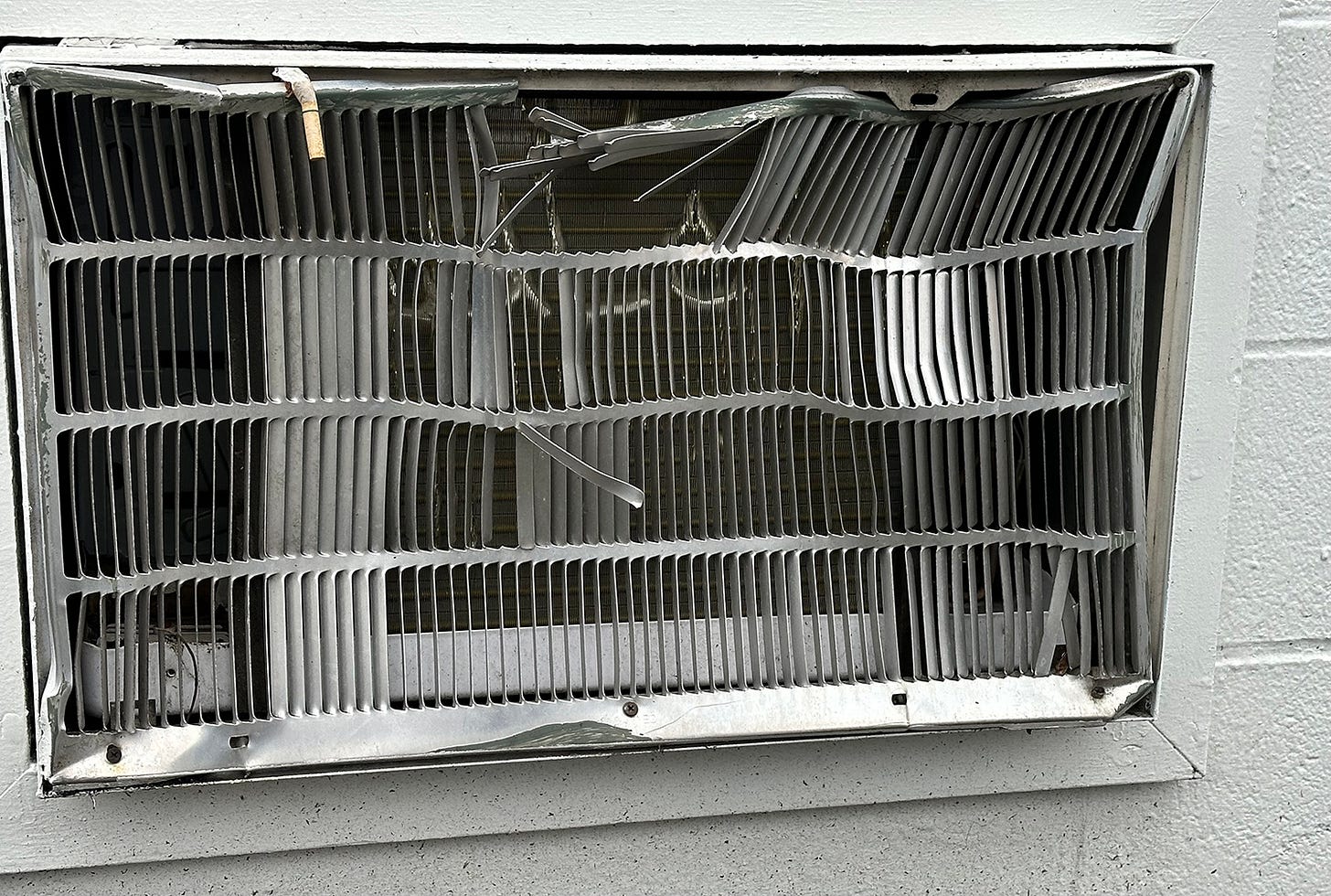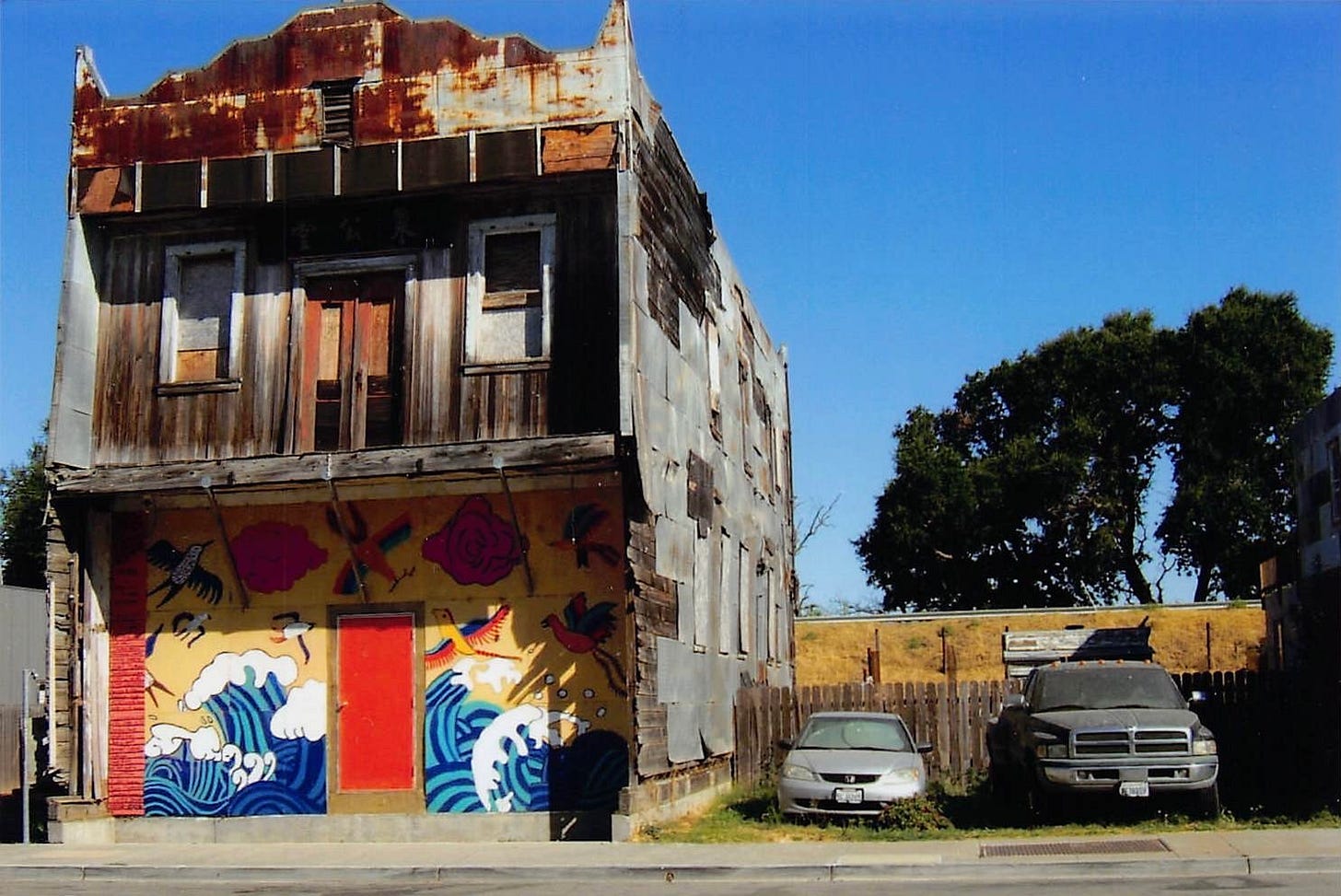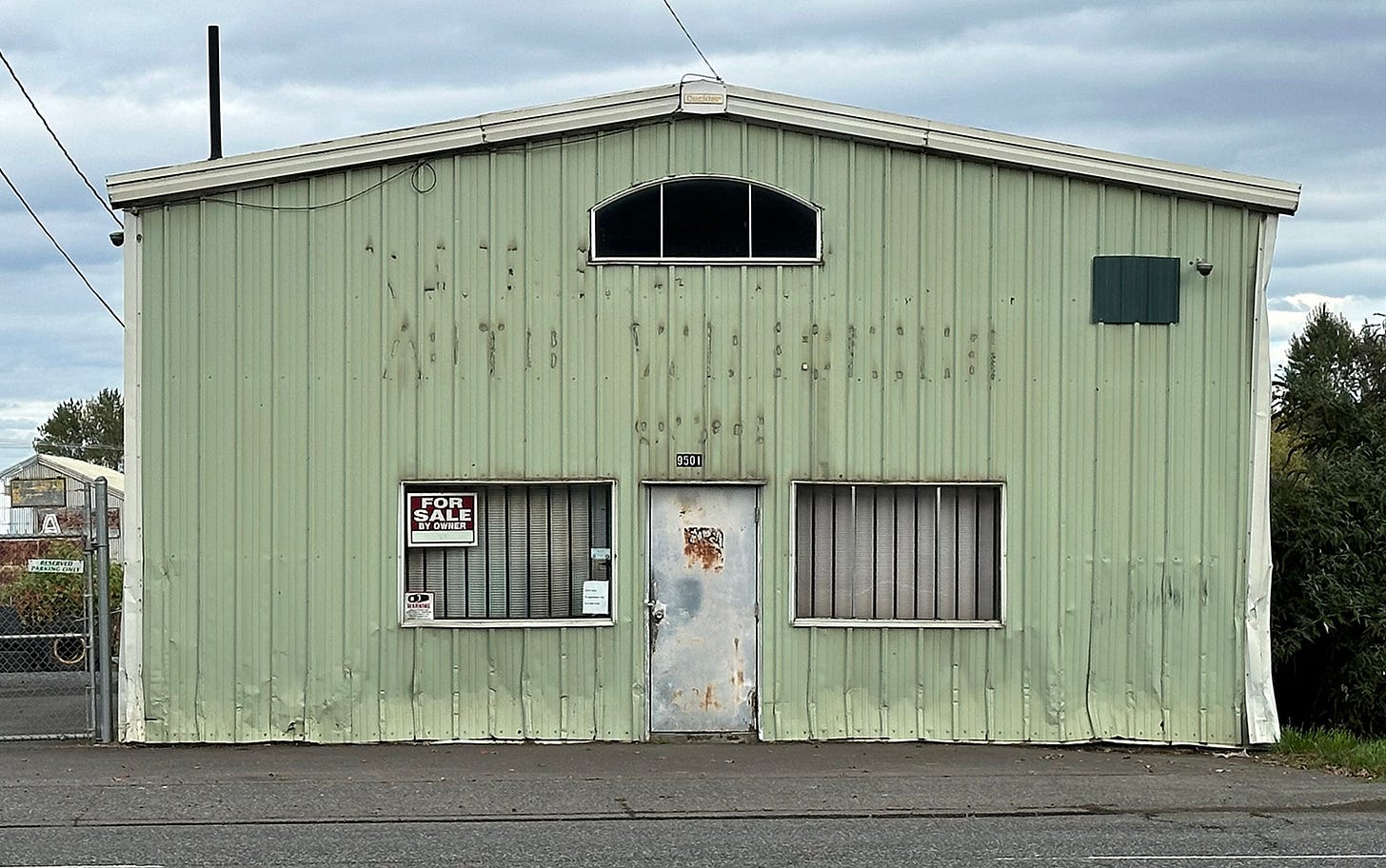Every city has them. Dilapidated buildings, forgotten factories, abandoned automobiles. Places, structures, everyday properties that were once proud, that housed well-fed workers or well-fed children or a small business that folded and went away.
I’ve always been drawn to dilapidation, to old structures. When my children were little, we would prowl Old Town in Portland, back before all the urban renewal, taking photographs of brick walls and broken windows.
Eons before that, when I lived in Berkeley, Calif., I would drive through Emeryville, an industrial enclave on San Francisco Bay, marveling at the factories, the storage towers and walkways built out like appendages. The city was at a nadir then and had a tattered feel, but has since been pulled back into shape by the arrival of high-tech New Era businesses.

Decay is everywhere
Walking and traveling by bus in Portland, I see urban decay every day. Houses with peeling paint and mossy roofs. Abandoned commercial buildings. Old cars, discouraged vacant lots, battered Dumpsters. Old metal equipment and fittings, discarded wooden pallets, crumbling stone walls, trees and telephone poles at the ends of their lives.
On so many surfaces, graffiti blossoms despite the ordinances telling property owners to clean it up.

How decay affects us
Sometimes, the decay I see matches my soul. My skin itches and flakes like that old paint. The grit of survival crunches under my boots (actually, the wheels of my wheelchair.) Some days, my eyes feel content to rest on old things, ending things. Decay may have a smell, too, but my vantage point is too far away to sense that.
How does decay claw at your being?
These are images to inspire you to write, or draw or paint or embroider, or whatever twist your creativity takes. Does a house with a sagging roofline remind you of Irish stew? Don’t laugh—these sorts of crazy connections are what spark creativity.

Look around you
I encourage you to notice when you are out and about. Keep your face out of your phone. Quiet your raging thoughts. Look past the pretty facades and tended gardens of prosperous homeowners and focus on the properties that are losing, listing, leaning.
Learn to love damaged things. Some can be repaired. Some stand as tributes to more prosperous times. Many face demolition.
These things were created by humans. How does that humanity, tempered by time, tribulation and tragedy, work through you when you see urban decay?

Click here to read Decay, the previous creative prompt.
Read more from Fran at Becoming….
If you enjoyed this post, hit the ♡ to let us know.
If it gave you any thoughts, please leave a comment.
If you think others would enjoy it, hit re-stack or share:
If you’d like to read more:
And if you’d like to help create more Juke, upgrade to a paid subscription (same button above). Otherwise, you can always help with a one-time donation via Paypal or Venmo.






Excellent prompt, Fran. While I don't live in a big city, there's plenty of small town "decay" among the old, abandoned buildings along main street. Nevada itself is a collection of ghost towns and broken dreams, boom and bust wanderers going from one strike to another. I'll see what I can come up with on this prompt. Thank you.
Meanwhile, I'll leave you with this poem from my book:
Note on a Fencepost
Thank you, Rancher,
for not tearing down your barn
with its shattered roof
and walls leaning
further atilt each spring
taking up far too much space
on your tidy spread
it languishes peacefully
like grandpa on the porch
its stories growing more distorted
with each telling
too tough to collapse
too brittle to serve
yet winking with mischief
as if it's gotten away with something.
Bravo